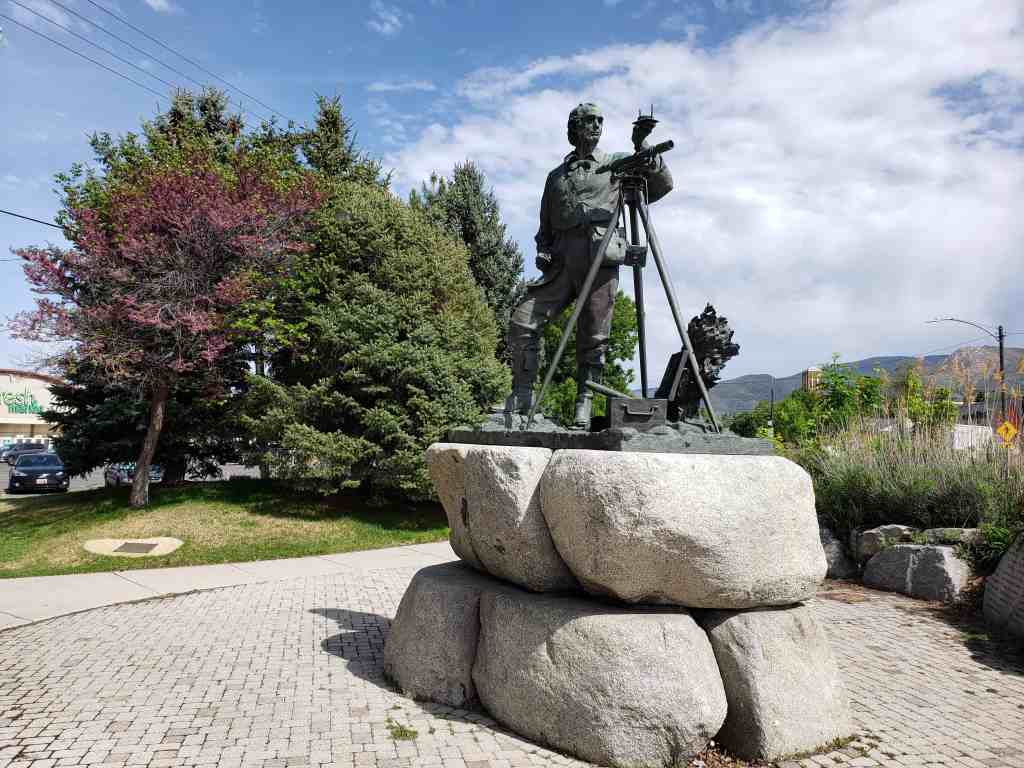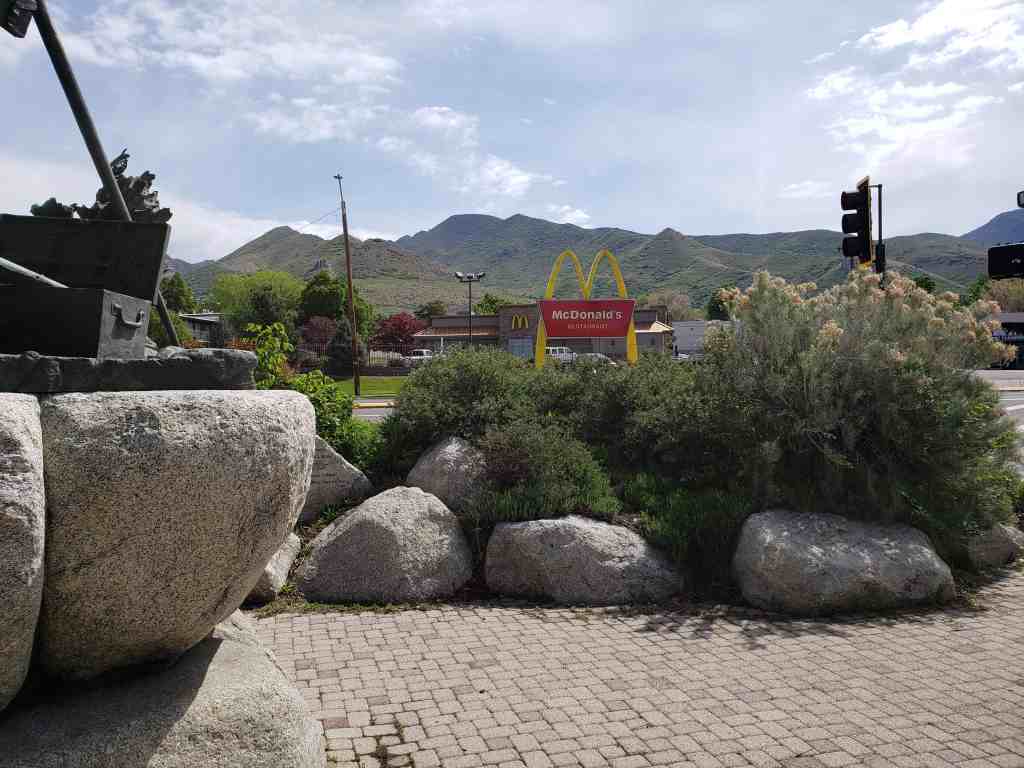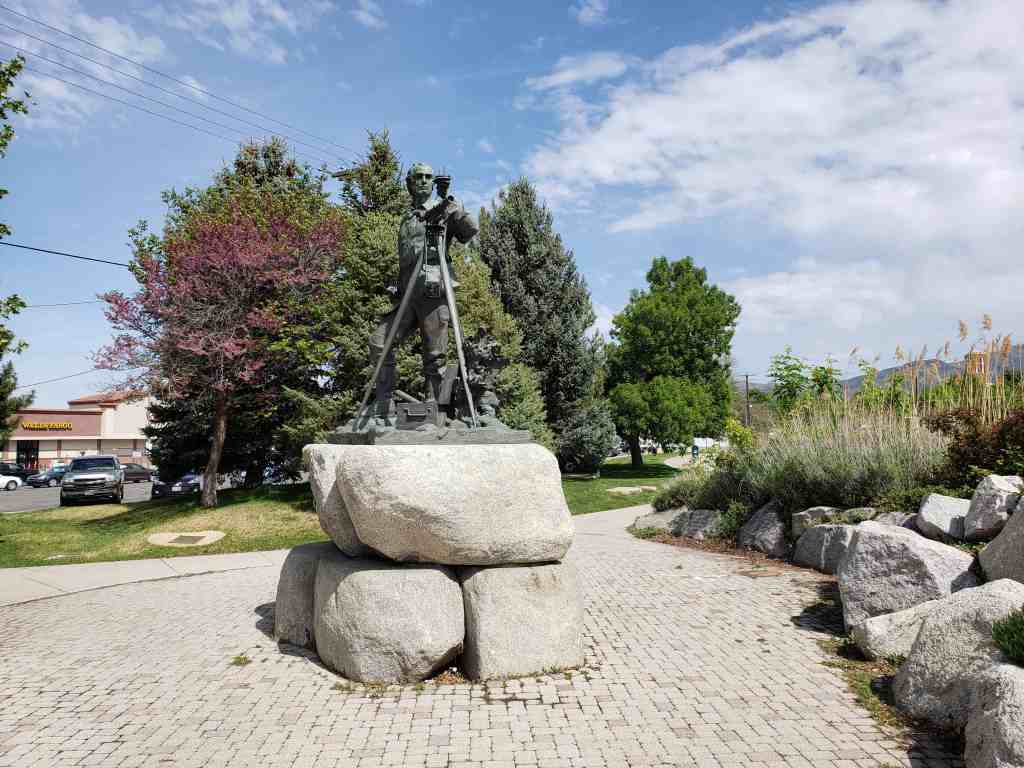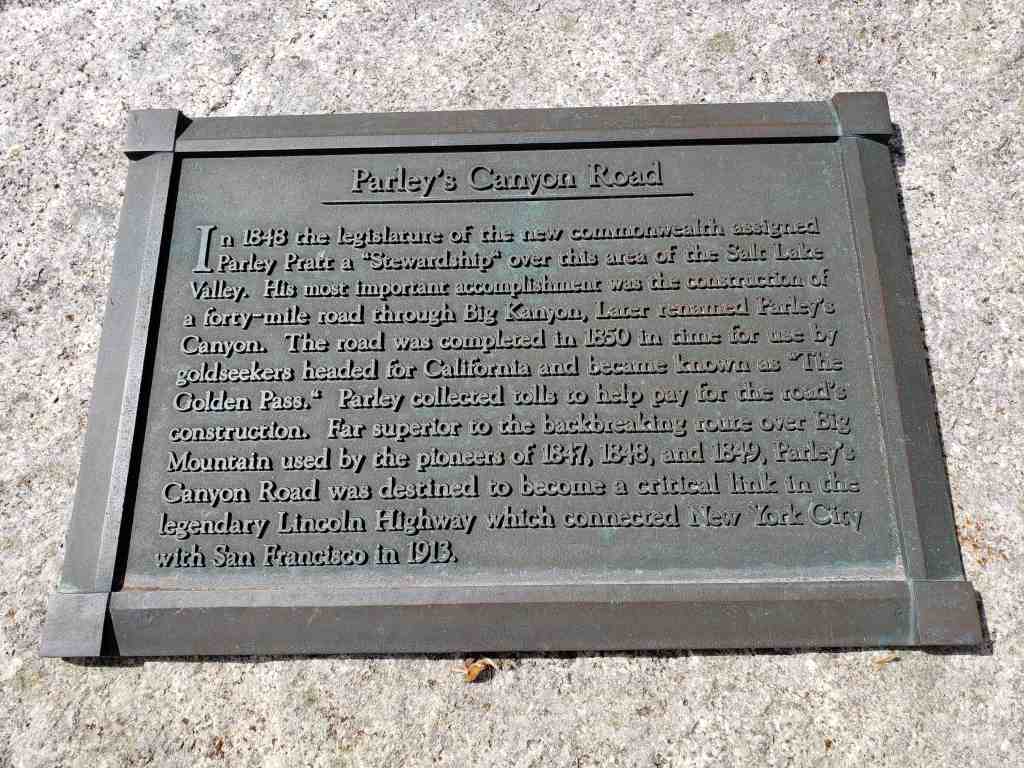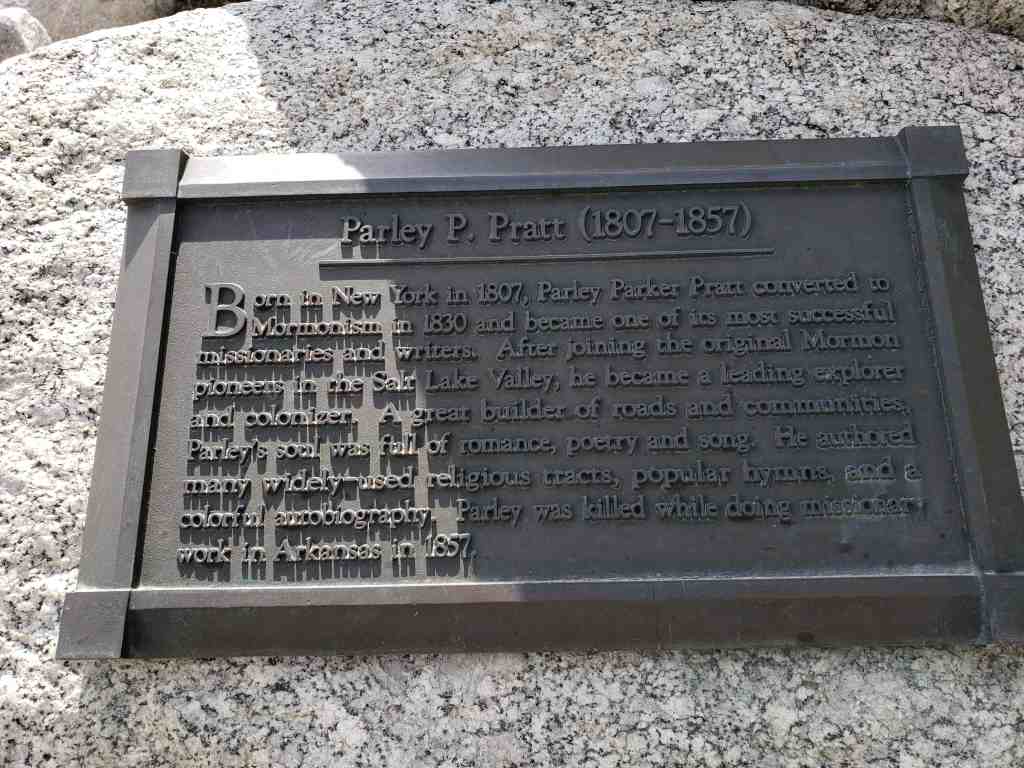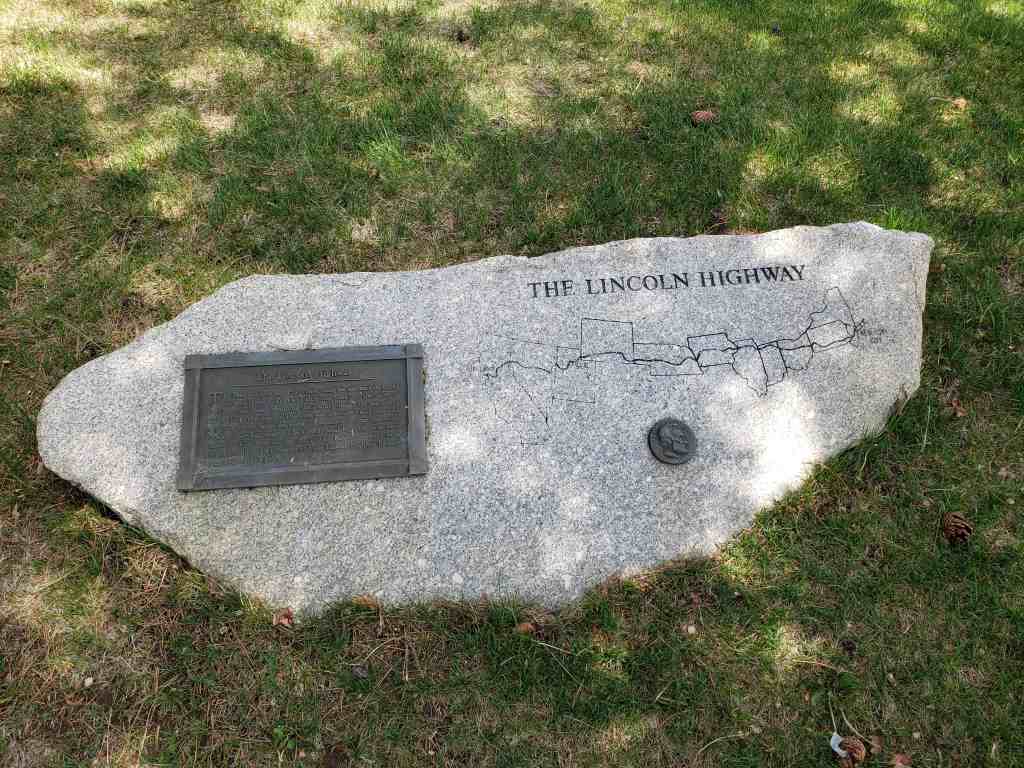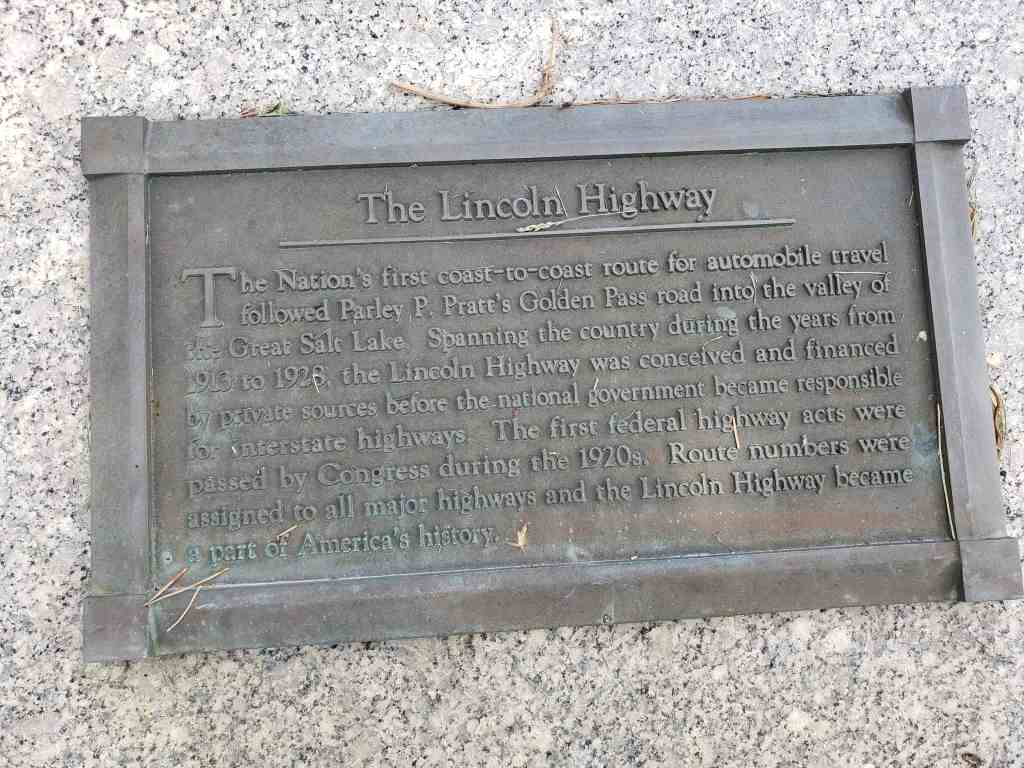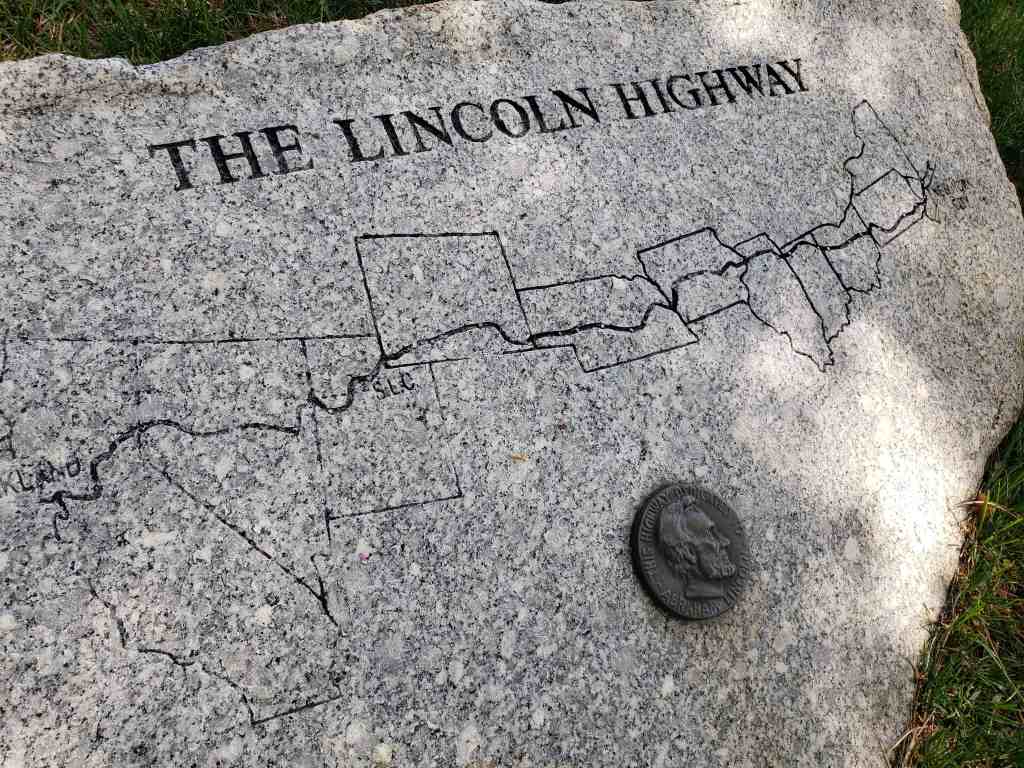Named for Parley P. Pratt, Parley’s Plaza is a little park space with markers and monuments located in the “Y” where Parley’s Way splits into 2100 South and 2300 East. (officially 2289 E 2100 S in Salt Lake)
Parley’s Canyon Road
In 1848 the legislature of the new commonwealth assigned Parley Pratt a “Stewardship” over this area of the Salt Lake Valley. His most important accomplishment was the construction of a forty-mile road through Big Kanyon, later renamed Parley’s Canyon. The road was completed in 1850 in time for use by goldseekers headed for California and became known as “The Golden Pass.” Parley collected tolls to help pay for the road’s construction. Far superior to the backbreaking route over Big Mountain used by the pioneers of 1847, 1848, and 1849, Parley’s Canyon Road was destined to become a critical link in the legendary Lincoln Highway which connected New York City with San Francisco in 1913.
Parley P. Pratt (1807-1857)
Born in New York in 1807, Parley Parker Pratt converted to Mormonism in 1830 and became one of its most successful missionaries and writers. After joining the original Mormon pioneers in the Salt Lake Valley, he became a leading explorer and colonist. A great builder of roads and communities, Parley’s soul was full of romance, poetry and song. He authored many widely-used religious tracts, popular hymns, and a colorful autobiography. Parley was killed while doing missionary work in Arkansas in 1857.
Parley’s Park
This part was presented to the community by the Big Kanyon Lasting Legacy, a group of private citizens commuted to beautifying the neighborhood, preserving its history and celebrating the spirit of pioneering. The names on the builders are the pioneer heroes of those who helped fund the improvements. The park was dedicated on October 24, 1998.
People
For centuries Ute and Shoshoni Indians roamed and camped throughout this region. In 1846, the Donner Party attempted to slash their way through Parley’s Canyon but were forced to divert back over Big Mountain and down Emigration Creek. This costly delay later led to their tragedy in the Sierras.
Following the Donner path over Big Mountain in 1847, the original company of Mormon advance scouts set up their first camp along the creek west of this site. In 1870, two black converts from Mississippi, Samuel Chambers and Edward Leggroan, settled with their families south of here and maintained a prize-winning farm for fruits, vegetables, and berries. Later, 300 Mormon settlers from Alabama and Mississippi founded a farming village further to the south called Cottonwood-Holladay.
The Lincoln Highway
(see also, this page)
The Nation’s first coast-to-coast route for automobile travel followed Parley P. Pratt’s Golden Pass road into the valley of the Great Salt Lake. Spanning the Country during the years from 1913 to 1928, the Lincoln Highway was conceived and financed by private sources before the national government became responsible for interstate highways.
The first federal highway acts were passed by Congress during the 1920s. Route numbers were assigned to all major highways and the Lincoln Highway become a part of America’s history.
Related:

